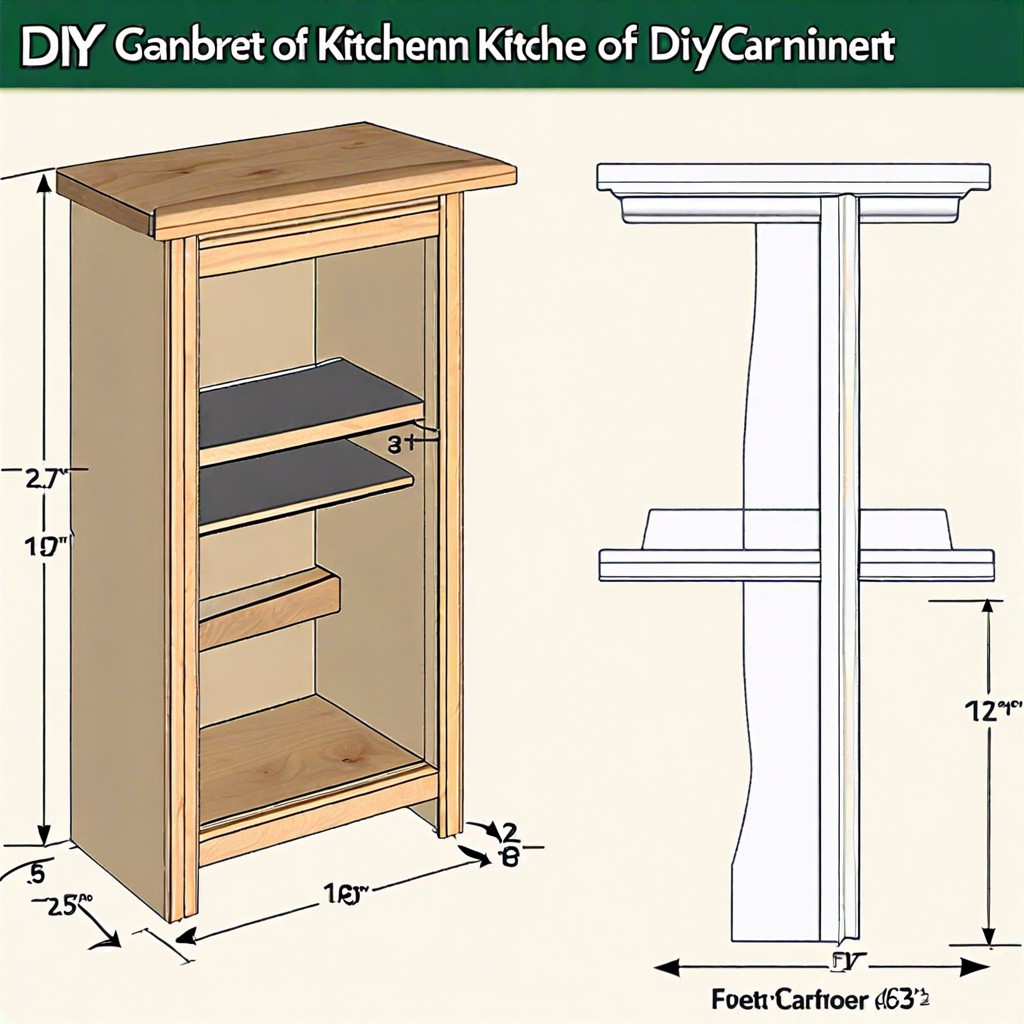Last updated on
Dipping toes into the world of metrics, this guide offers insights into unraveling the size of 14 cm by comparing and converting it into various common standards of measurement.
Key takeaways:
- 14 cm is about the length of a paperback book or two lip balms stacked on top of each other.
- It is slightly shorter than a standard DVD case or a stack of three Post-it notes.
- The width of a standard A5 notebook or the screen width of many smartphones are close to 14 cm.
- In the animal kingdom, it is roughly the size of a large Hercules beetle or the diameter of a medium-size sea anemone.
- In human anatomy, it covers a substantial part of an adult foot and falls short of reaching the fingertips.
What's Inside
14 Cm in Everyday Objects

Grasping the size of 14 centimeters can be easily done by looking at common items around you. For those who love to indulge in a good book, the average length of a paperback book’s short side is about 14 cm. Imagine standing two standard lip balms on end, one on top of the other; together, they’re a neat representation of the measurement in question. Picture a standard desk stapler, which is typically just a tad longer than this length — allowing a visual cue that is familiar in many office settings. And when you’re savouring your morning brew, the diameter of an average coffee mug is a practical point of reference. With these examples, you can appreciate and relate to the scale of 14 centimeters without reaching for a ruler.
Comparing 14 Cm to Common Household Items

Imagine holding a standard DVD case; it’s about 19 cm tall, so 14 cm is just a bit shy of that height.
It’s like looking at a stack of three standard Post-it notes, which typically measure 5 cm each on a side – the stack would almost reach the 14 cm mark.
If you’re sipping tea, the height of a teacup is often around that measure.
Or, consider the width of a standard A5 notebook which is also akin to 14 cm – perfect for a quick size reference.
For a tech-related comparison, the screen width of many smartphones hovers close to this measurement, offering a modern-day touch point.
In the kitchen, a stick of butter, usually 4 cm by 4 cm in width and depth, when laid on its side is just over a third of the 14 cm length.
These familiar items provide a tangible sense of just how long 14 centimeters is, anchoring the abstract number into concrete visuals.
Visualizing 14 Cm With Coins and Bills
Picture a stack of ten standard Euro coins placed one on top of the other; this roughly equals 14 cm. Similarly, envision a line of two US dollar bills end to end; each bill measures about 15.6 cm in length, so they would slightly overextend the target measurement.
This visualization offers a convenient reference as both coins and bills are familiar to many and have a consistent size, making mental approximations more attainable. Additionally, using currency as a comparative tool is quite handy since it’s almost always readily accessible for a quick physical comparison.
14 Cm in the Animal Kingdom
Understanding size through relatable comparisons can be particularly enlightening. When it comes to the natural world, 14 centimeters might be the approximate length of a large Hercules beetle, one of the largest beetles on Earth. Picture a poison dart frog, with some species reaching up to about this size, their vibrant colors stretching across a similar span. The beak of a toucan could also fall into this category, considering the large range among species.
For marine life enthusiasts, it’s interesting to note that the diameter of a medium-size sea anemone might be about 14 centimeters when fully expanded, creating a splash of color and dimension in the underwater realm. These examples provide a tangible frame of reference, helping one grasp the scale of objects in a world that’s vastly diverse in sizes.
14 Cm in Human Anatomy
Understanding the size of 14 centimeters provides a tangible connection to our own bodies, revealing how measurements play into everyday life. For instance, the average length of an adult human’s foot is about 24 to 28 cm, which means that 14 cm—a little over half of that—could cover a substantial part of your foot’s arch or possibly be the length of the foot of a newborn.
Consider also the typical length of a human hand from the wrist to the fingertip, which is approximately 19 cm for women and 20 cm for men. Here, 14 cm would fall short of reaching the fingertip, stopping around the base of the palm.
In medical terms, 14 cm can be significant when discussing the dilation required for childbirth. During labor, 14 cm signifies more than full dilation, as full dilation measures about 10 cm. It is also similar to the length of a typical adult heart, which highlights the compact power of such an essential organ.
In appreciating these comparisons, we can see how this dimension integrates into our physiology; it’s both relatable and surprisingly versatile in terms of what it represents in human anatomy.
Toys and Games With Elements Around 14 Cm
Imagine stacking two LEGO bricks on top of each other; that can easily give you a length close to 14 centimeters. Board game aficionados can relate when thinking about the length of a standard ‘Ticket to Ride’ train car card, which measures up snugly against the 14 cm mark.
Picking up a Rubik’s Cube, you’ll notice that its edges are a bit shorter, but line up two cubes, and you’ve got a visual for approximately 14 cm. Scale model enthusiasts will recognize it too, as it is just shy of the wingspan of a typical 1:72 scale model fighter plane.
For doll lovers, the foot-to-knee height of a Barbie doll is roughly within this range. These toys and games not only illustrate the measurement but also present a tangible way to grasp the size of 14 cm in a context that’s both familiar and playful.
Clothing Items Measuring 14 Cm
Considering the size of clothing items, a 14 cm measurement often represents specific, smaller parts rather than the overall dimensions of the garment. Here’s a snapshot of where you might find this measure in clothing:
- Brims on hats: Many baseball caps and sun hats feature brims around 14 cm, offering adequate sun protection for your face.
- Cuffs on sleeves: For those who prefer a wider finish, shirt cuffs may stretch up to 14 cm in width, providing a stylish and comfortable fit around the wrists.
- Sock heights: Ankle socks, depending on the size and style, can stand roughly 14 cm tall from heel to cuff, just the right height for athletic or casual wear.
- Tie width: The classic width for a necktie hovers close to 14 cm at its widest point, balancing between traditional and modern aesthetics.
- Width of belts: A chunky fashion statement, some belts designed for jeans can be approximately 14 cm wide, making them substantial accessories.
In each case, 14 cm serves as a detail measurement that contributes to style, function, or comfort. When assessing fit or looking for a specific design, knowing these details can greatly influence your sartorial choices.
Understanding 14 Cm in Architectural Terms
In architecture, precision is key, and dimensions as small as 14 centimeters are significant. This measurement might be used to specify the width of decorative trim or baseboards. These elements add character to a room, framing spaces with elegance, where a few centimeters can influence the visual impact.
It’s also a practical dimension for the spacing between wall studs in custom cabinetry or shelving, ensuring that the structure has adequate support. Another application could be the minimum spacing for safety rails in stairwells or balconies, aligning with both aesthetics and building codes.
Understanding the scale, 14 centimeters might represent the rise of a single stair step, determining the pace of your ascent within a building. Architects may also use this measure for the depth of a windowsill, creating the perfect perch for your morning coffee or favorite plants.
Embracing these subtle details allows architects to create spaces that are not just visually appealing, but tailored to the minutiae of daily life.
Converting 14 Centimeters to Inches
If you’re comfortable with centimeters but inches have you scratching your head, don’t fret! Converting 14 centimeters to inches is a painless process:
1. Know the Conversion Rate: One inch is approximately 2.54 centimeters. This is your golden conversion key.
2. Simple Division: Divide your centimeter measurement, in this case, 14, by 2.54 to get the inch equivalent.
3. Use a Calculator: To minimize errors, a calculator is your best friend. Input 14 ÷ 2.54 and voilà, you have your answer.
4. Rounded Off Result: For everyday purposes, rounding the result to the nearest hundredth is usually sufficient, resulting in 14 cm being about 5.51 inches.
Remember, accuracy matters, but when it’s not surgery or high-precision engineering, an approximation often serves well.
FAQ
What size is 14cm in inches?
Fourteen centimeters equates to roughly 5.51 inches.
How big is 14 cm on a ruler?
On a ruler, 14 centimeters would span a length approximately equal to 5.511811 inches.
How many centimeters is 14 inches?
14 inches is equivalent to 35.56 centimeters.
What does 1 cm in length look like?
A gauge to comprehend 1 cm length would be akin to the diameter of a typical pencil, the length of a staple, the combined width of five CDs or DVDs stacked together, the thickness of a standard notepad, or the radius of a U.S. penny.
How does 14 cm compare to the average human hand span?
The average human hand span is typically around 20 cm, so 14 cm is considerably smaller.
What is the equivalent of 14 cm in feet?
The equivalent of 14 cm in feet is approximately 0.46 feet.
How does 14 cm relate to the size of standard A4 paper?
Fourteen centimeters is shorter than the width of a standard A4 sheet of paper which measures 21 cm by 29.7 cm.




